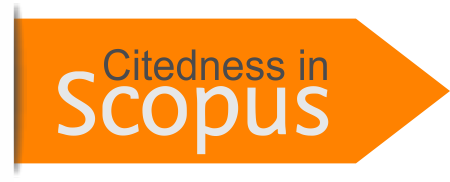A Study on the Efficacy of Different Botanicals Against Potato Tuber Moth (Phthorimaea Operculella) in Stored Potatoes
Abstract
The Potato Tuber Moth (Phthorimaea operculella) is a destructive pest that poses a significant threat to stored potato crops, leading to substantial economic losses worldwide. The use of chemical insecticides to control this pest has drawbacks such as environmental pollution and potential harm to human health. As a result, it is critical to investigate alternate control strategies, such as botanical extracts. This study aimed to evaluate the efficacy of different botanicals, Azadirachta indica (Neem), Acorus calamus (sweet flag), Sapindus mukorossi (Soapnut) and their combination against the Potato Tuber Moth in stored potatoes. The research followed a randomized sampling technique, with seven treatments {T1: sweet flag (100%), T2: Neem (100%), T3: neem (50%)+ soapnut(50%), T4: soapnut powder (100%), T5: sweet flag (50%)+ Neem (50%), T6: sweet flag (50%)+ soapnut(50%), T7: control }. The treatments were applied to potatoes and data were observed, recorded, and tabulated. Our results showed that there was not a huge difference in the final result of mortality in all the treatments, all showing similar results. But when observed by counting the time factor, Acorus calamus outsmarted other bio-pesticides by killing 100% of insects in much less time. Further, all the treatments significantly affect the weight loss of potato tuber. Potato tuber treated with T1 showed the least weight loss of 1.88% of total weight followed by T6 and T4 with 2.56% and 2.58% of weight loss respectively. There was also some weight loss in the untreated potatoes due to evaporation and other physical factors. To sum up the overall result of our study, the experiment concluded that Acorus calamus (T1) had given the best result and thus it stood to be the best bio-pesticide among all.
Keywords
Full Text:
PDFReferences
Bowerman, B.L. and O'Connell, R.T., 1993. Forecasting and Time Series: An Applied Approach. 3rd.
Damodar N, G., 2004. Basic econometrics.
Enders, W., 2008. Applied Econometric Time Series. John Wiley & Sons.
Engle, R.F., 1982. Autoregressive Conditional Heteroscedasticity with Estimates of the Variance of United Kingdom Inflation. Econometrica: Journal of the econometric society, pp.987-1007.
Jang, Y.E., 2019. Do ESG Scores Matter In The Market?: Environmental, Social and Governance Performance in Relation to Stock Returns And Profitability in European Market.
Kewal, S.S. and Putranto, Y.A., 2019. Socially Responsible Investing (Sri) Dan Kinerja Saham. Jurnal Nominal, 8(2), pp.194-208.
Sudha, S., 2015. Risk-Return and Volatility Analysis of Sustainability Index in India. Environment, development and sustainability, 17(6), pp.1329-1342.
Sukono, Sudradjat,S. and Susanti, D., 2015. Estimasi CAPM Menggunakan Pendekatan Transformasi Freeman-Tukey dalam Perhitungan Value-at-Risk dan Expected Shortfall.
Tandelilin, E., 2017. Pasar Modal Manajemen Portofolio & Investasi. Yogyakarta: PT Kanisius.
Tsay, R.S., 2005. Analysis of financial time series. John wiley & sons.
Wang, W., Guo, Y., Niu, Z. and Cao, Y., 2009, December. Stock Indices Analysis Based on ARMA-GARCH Model. In 2009 ieee International Conference on Industrial Engineering and Engineering Management (pp. 2143-2147). IEEE.
Wang, Y.G., 2011. Corporate Social Responsibility and Stock Performance Evidence from Taiwan. Modern economy, 2(5), p.788.
Wei, W.W., 2006. Time Series Analysis: Univariate and Multivariate. Methods. Boston, MA: Pearson Addison Wesley.
DOI: https://doi.org/10.46336/ijqrm.v4i4.531
Refbacks
- There are currently no refbacks.
Copyright (c) 2023 Bibek Lamsal, Saraddha Khasu Magar, Khuma Kumari Bhusal, Srijana Bharati

This work is licensed under a Creative Commons Attribution 4.0 International License.
Published By:
IJQRM: Jalan Riung Ampuh No. 3, Riung Bandung, Kota Bandung 40295, Jawa Barat, Indonesia
IJQRM Indexed By:
 Creation is distributed below Lisensi Creative Commons Atribusi 4.0 Internasional.
Creation is distributed below Lisensi Creative Commons Atribusi 4.0 Internasional.








